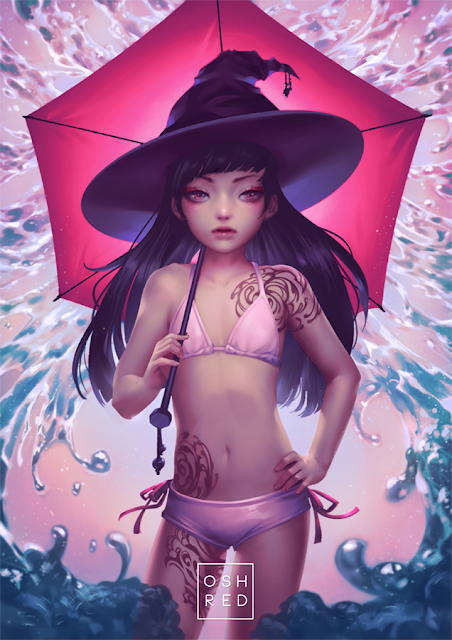Frank Frazetta: Visual storytelling analysis
When I look at a lot of my previous work I notice that with vertical compositions I tend to place things front and centre. This ends up making the compositions boring and stiff and I want to return to doing purely compositional storytelling analysis articles to understand better how the great artists keep this from happening, especially with vertical compositions.
The first thing I notice is the rule of thirds being applied here, if we dropped a grid over this image we would see that the tiger and the female both land in opposite quadrants from one another diagonally. This keeps the composition from looking stiff and keeps it from being boring by adding the diagonal element to the picture. If we changed this and put them at the same level this would break the composition possibly and confuse the audience on who is the hunter and who is the hunted as it would not be clear.
This also applies to if we reversed this composition and put her at the top we would then interpret this as her hunting the tiger. Also lets notice here that since the camera is at eye level with her we get the feeling that we are behind her in the piece almost like we are standing with her in the water and this tiger could just as well be looking at us. Likewise its no mistake that his open gaping mouth is at the same level as her head.
She is framed and trapped behind her with a wide space that is created by the shape of the tree that keeps her from going back as she is level with it and she's so close to the other side of the frame that we don't feel like she has anywhere to go in front of her or to her side.
Color
The colors here have a lot of vibrancy to them, and the reason is that he choose multiple colors of similar values and placed them next to one another. For example the blue and purple of the trees and water blend together very nicely and makes them dance and push the orange of the tiger forward towards us. The warmness of the tree makes it feel closer to us by comparison. We also get a nice contrast with the color with the vibrancy of the tigers coat next to her duller colors that almost feels like a corpse, another visual storytelling element.
Value design and shape design
Lets look at it in black and white and some shapes he used
Big, Medium, and small
There is a lot of contrast between big medium and small shapes and what has detail and what doesn't. For example the white stark background is a big quiet shape that adds to the feeling of shock or surprise that the medium detailed shape of the tiger represents. We see that the tiger is sandwiched between two fairly large shapes, one with no detail and one 9the grass) with detail but this detail is pushed back since it has a lot of lost edges in it. Then we get the quiet shape of the water and this is balanced out by the repeating pattern of the lillypads sitting in the water around her.
Her shape is that of a almost naked body which would be one big shape that would come across as generic until he added the subdivisions to these shapes with the jewellery around her waist, head and hand. Other shapes up top get lost in the shadows as well as on the right and whatever sits in the distance.




Comments
Post a Comment